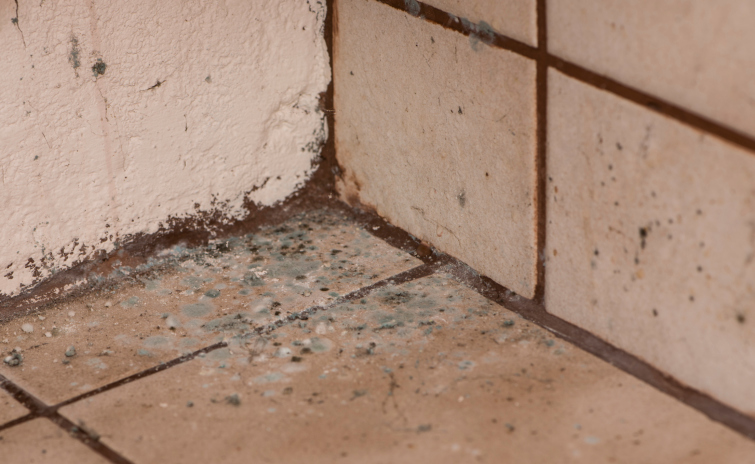 When decorating a small space, there is a general desire to make the space look and feel larger than it is while also meeting basic functional needs in the room. For example, there may be a need to accommodate seating for a group of people in a living room, but there also may be a desire to provide ample space for foot traffic so the area does not feel cramped. By following a few important tips, it is possible to furnish smaller spaces so that they are functional and do not feel cramped.
When decorating a small space, there is a general desire to make the space look and feel larger than it is while also meeting basic functional needs in the room. For example, there may be a need to accommodate seating for a group of people in a living room, but there also may be a desire to provide ample space for foot traffic so the area does not feel cramped. By following a few important tips, it is possible to furnish smaller spaces so that they are functional and do not feel cramped.
Think About Decorative Storage Solutions
One of the most common factors that will make a small space seem cramped and uncomfortable relates to clutter, and because of this, focusing on storage solutions can go a long way toward making the space feel larger than it is. Storage solutions can be decorative, and they can be a true benefit to the décor in the room. Think about functional storage features like an ottoman with hidden storage features, an entertainment center with cabinets and shelves or a tall bookshelf that can hold many of the items that are needed in the room.
Decorate The Space Vertically
For most people, there is a general inclination to decorate a room horizontally and to fill the floor space with furnishings, but this can be detrimental when decorating a smaller room. In a smaller space, decorating the space vertically by using bookshelves, storage cabinets and other features that rise above the ground rather than that sprawl across the ground can be beneficial. The goal should be to decorate the room fully while leaving ample space for foot traffic to maneuver through the room comfortably.
Use Lighter Colors
Darker colors used in a smaller room can make the space feel closed off and cramped. Using lighter colors can brighten the space and make it seem more airy. While using shades of white and beige throughout a space may not be ideal in all rooms, these can be incorporated into various aspects of the décor to improve the spacious feel of the room.
Smaller spaces can be challenging to decorate, but there are different tips and tricks that can be used to make the space look and feel larger than it is. Some tips help improve the functional use of the space, while others simply play tricks and create the illusion of space. All can be used together to create the feeling of a larger, more inviting room.
 Curb appeal is often neglected by sellers. So much attention is spent getting the inside of a home cleaned up that the outside is left until last. This is a mistake. Landscaping and gardens are the first things a prospective buyer sees. Following these tips ensures homes look their best and give a positive first impression.
Curb appeal is often neglected by sellers. So much attention is spent getting the inside of a home cleaned up that the outside is left until last. This is a mistake. Landscaping and gardens are the first things a prospective buyer sees. Following these tips ensures homes look their best and give a positive first impression. House fires can break out for a wide range of reasons, and these include everything from grease fires while cooking in the kitchen to lightning striking the home. They can cause a significant amount of property damage as well as personal injury or even loss of life, so preventing them and knowing how to properly respond if a fire does break out are important. Whether buying a new home or residing in an existing home, everyone can benefit from learning more about fire safety rules.
House fires can break out for a wide range of reasons, and these include everything from grease fires while cooking in the kitchen to lightning striking the home. They can cause a significant amount of property damage as well as personal injury or even loss of life, so preventing them and knowing how to properly respond if a fire does break out are important. Whether buying a new home or residing in an existing home, everyone can benefit from learning more about fire safety rules. Homeowners who are thinking about listing their home for sale in the coming weeks or months may be focused on improving their home to help it sell more quickly, but there also may be a focus on adding value to the home in the process. While each home is unique, there are a few projects that most homeowners would benefit from. In fact, these are a few simple and easy projects that can typicaly be completed over the course of a weekend; that can add value and desirability to the home.
Homeowners who are thinking about listing their home for sale in the coming weeks or months may be focused on improving their home to help it sell more quickly, but there also may be a focus on adding value to the home in the process. While each home is unique, there are a few projects that most homeowners would benefit from. In fact, these are a few simple and easy projects that can typicaly be completed over the course of a weekend; that can add value and desirability to the home. Many people look forward to the long, relaxed, sunny days of summer, but they also dread opening up their energy bills throughout the summer months. Cooling a home can be costly, and many are searching for convenient ways to lower cooling costs without sacrificing on comfort inside the home on the warmest days of the year. These are just a few of the cost-effective and convenient options that can help homeowners to reduce cooling costs throughout the summer.
Many people look forward to the long, relaxed, sunny days of summer, but they also dread opening up their energy bills throughout the summer months. Cooling a home can be costly, and many are searching for convenient ways to lower cooling costs without sacrificing on comfort inside the home on the warmest days of the year. These are just a few of the cost-effective and convenient options that can help homeowners to reduce cooling costs throughout the summer. When spring arrives, many people want to spend more time outdoors enjoying the fresh air and warmer temperatures. While you could lounge in a chair with a good book, you may find it more enjoyable to plant your own vegetable garden. This is an on-going project that will require you to spend time outdoors regularly, and it can be quite enjoyable to watch the fruits of your labor spring to life. More than that, you may love to sample and even share the tasty treats that you have grown on your own. If you are ready to get started planning and planting your vegetable garden, follow these preliminary steps.
When spring arrives, many people want to spend more time outdoors enjoying the fresh air and warmer temperatures. While you could lounge in a chair with a good book, you may find it more enjoyable to plant your own vegetable garden. This is an on-going project that will require you to spend time outdoors regularly, and it can be quite enjoyable to watch the fruits of your labor spring to life. More than that, you may love to sample and even share the tasty treats that you have grown on your own. If you are ready to get started planning and planting your vegetable garden, follow these preliminary steps. Even the most aesthetically pleasing homes can have mold issues. A type of fungus that thrives on moisture, mold can trigger symptoms such as itching eyes, asthma attacks and bouts of sneezing or coughing.
Even the most aesthetically pleasing homes can have mold issues. A type of fungus that thrives on moisture, mold can trigger symptoms such as itching eyes, asthma attacks and bouts of sneezing or coughing. Spring is around the corner, and it’s time to get your home in order!
Spring is around the corner, and it’s time to get your home in order! Are you a homeowner who is searching for ways to make your home a bit more eco-friendly? Equipping your home with “green” improvements can save a substantial amount of energy and money, especially over the long term.
Are you a homeowner who is searching for ways to make your home a bit more eco-friendly? Equipping your home with “green” improvements can save a substantial amount of energy and money, especially over the long term. Many buyers anticipate the day they drive to their new home. Then it happens: the movers pull up. It’s time to move everything in. This can be a daunting task, but following a few steps will break down the work and careful planning will maximize space in the years ahead.
Many buyers anticipate the day they drive to their new home. Then it happens: the movers pull up. It’s time to move everything in. This can be a daunting task, but following a few steps will break down the work and careful planning will maximize space in the years ahead.